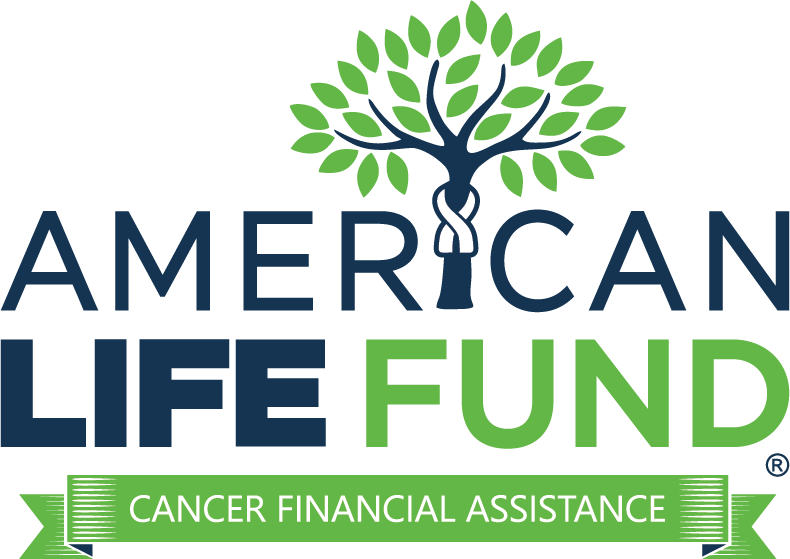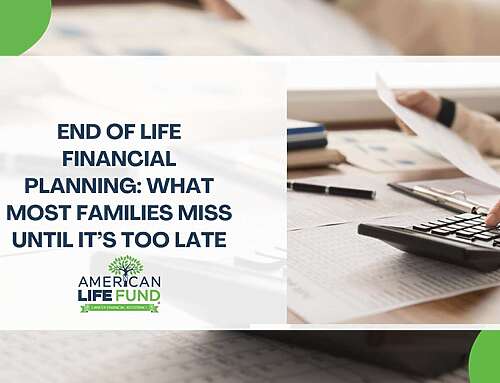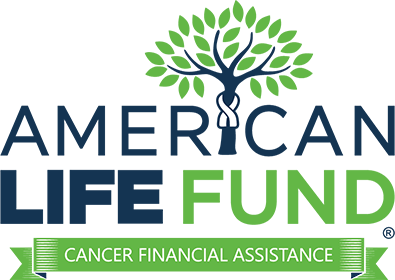The Reality of End-of-Life Expenses — And Why It Matters Now
There’s a moment when the focus shifts—from trying to get better, to trying to stay comfortable. For many, that moment also brings a difficult question: Can I afford the care I actually need without burning through everything I’ve saved?
End of life care, including hospice services and palliative care, can ease pain, reduce stress, and offer time that feels more like living. But the cost can feel like a roadblock, especially for those who don’t want to touch their personal savings, retirement funds, or leave behind a financial burden.
Some hesitate to ask for more support—not because they don’t want it, but because they’re worried about the cost. That hesitation is understandable. It’s also the reason this conversation matters. If you’re weighing how to pay for end of life care without using savings, take a moment to see what your options really are.
At American Life Fund, we work with people who are weighing these exact choices. Our goal is simple: we help you access the financial resources you already have—without waiting, without stress. Dignity, comfort, and control shouldn’t come second to cost.
Average Costs of End-of-Life Care
While hospice care and palliative care services focus on comfort and quality of life, they come with associated costs that can impact your personal savings and retirement funds. Here’s an overview of these expenses and considerations for managing them.
In-Home Hospice Care: Receiving hospice care at home allows patients to remain in a familiar environment. The cost varies based on the level of care required:
- Routine Home Care: For the first 60 days, Medicare reimburses at approximately $199.25 per day; after 60 days, this decreases to $157.49 per day.
- Continuous Home Care: This intensive care is provided during periods of crisis and is billed at an hourly rate. Medicare’s rate is about $63.42 per hour, totaling $1,522.04 for a full 24-hour period.
Hospice Facility Stays: When in-home care isn’t feasible, inpatient hospice facilities offer comprehensive services:
- General Inpatient Care: Medicare reimburses approximately $1,045.66 per day for patients requiring short-term, intensive care that can’t be managed at home.
- Inpatient Respite Care: To provide relief for family caregivers, patients may stay in a facility for up to five days. Medicare’s reimbursement rate is about $461.09 per day.
Specialized Palliative Care Services: Palliative care focuses on symptom management and can be provided alongside curative treatments. Costs vary widely depending on services and settings, and may be covered by Medicare, Medicaid, or private insurance. It’s essential to consult with your healthcare provider and insurance plan to understand specific expenses.
For a better understanding of palliative care options and considerations, you can refer to our detailed guide on What Is Palliative Care?
Additional Expenses Not Fully Covered by Insurance
While Medicare, Medicaid, and private insurance plans cover many hospice-related services, certain costs may not be fully reimbursed:
- Durable Medical Equipment (DME): Items like hospital beds, wheelchairs, and oxygen equipment may require co-payments or may not be fully covered. Discuss with your hospice provider about which equipment is deemed necessary and how it’s billed.
- Ambulance Services: Transportation related to the terminal illness may not be covered unless pre-approved or deemed medically necessary. It’s advisable to confirm coverage details with your insurance provider.
- Medications: While drugs related to pain and symptom management are typically covered, prescriptions unrelated to the terminal illness might not be. Clarify with your hospice team which medications are included.
You can explore what care includes in our End of Life Care Guide.
What It All Adds Up To
For someone receiving routine in-home hospice care, the monthly cost typically lands around $6,000. If a patient requires continuous care or stays in a hospice facility, that figure can climb to $15,000–$30,000 per month, depending on intensity and location.
Paying Without Using Savings: Real Options That Offer Relief
One option many people don’t realize they have is already in their hands: their life insurance policy.
A viatical settlement allows a terminally ill person to sell their life insurance policy to a licensed provider for a lump sum cash payment. It’s not a loan. There’s nothing to repay. It’s a way to access the value of your policy now—when it can provide comfort, choice, and time with the people who matter most.
Whether it’s to cover hospice costs, arrange inpatient care, or simply reduce the financial stress on family members, a viatical settlement helps pay for end of life services without tapping into personal savings or retirement funds.
See if you are eligible to qualify
Beyond viaticals, other financial resources may help:
- Medicare and the Medicare Hospice Benefit: Covers many hospice care services, though some services like certain prescriptions, durable medical equipment, or ambulance services may require out-of-pocket costs.
- Medicaid Coverage: Offers support for those with limited income, including long-term healthcare services, though eligibility and coverage vary by state.
- Private Health Insurance: Coverage depends on the policy. Be aware that paying additional premiums or dealing with coverage gaps can still lead to significant out-of-pocket costs.
- VA Benefits: For eligible veterans, the Veterans Administration may cover hospice through VA health care or contracted hospice facilities.
- Charities and Nonprofits: Some offer financial assistance or help pay for services not covered by insurance.
These are real, viable ways to pay for hospice and palliative care—but not all of them are fast or simple. That’s why many people choose to act on what they already own. A viatical settlement can be the most direct way to cover hospice care without adding a financial burden to yourself or your loved ones.
With American Life Fund, finding out if you qualify takes less than two minutes. There’s no pressure, no commitment—just a quick, confidential review to see if your life insurance policy could be converted into a meaningful lump sum. For those in the final stages of a chronic illness, this speed can make a real difference.
Compare that to applying for help from charities or organizations—each with their own eligibility requirements, long forms, minimal grants, and wait times. Even after hours of research and paperwork, there’s no guarantee of help. A large, lump sum cash payment through a viatical settlement gives you clarity and control right away, without needing to jump through hoops or hope for approval from multiple sources.
The Consequences of Spending Your Savings
It’s not just about numbers—it’s about what those numbers represent. Tapping into your personal savings or drawing down your retirement funds to cover end of life care might seem like the only option. But the ripple effects are real.
For some, it means there’s less left to pass on to family members—money meant for security, stability, or a fresh start. For others, it means compromising on the kind of life care they want, cutting back on support, or skipping services like spiritual care, grief counseling, or specialized pain management.
This isn’t about choosing luxury over necessity—it’s about preserving the comfort, peace, and dignity that everyone deserves in the time they have. It’s also about protecting what you’ve built, so your final financial decisions reflect your values—not just your circumstances.
A viatical settlement offers a way to do that. It gives you the ability to cover hospice services, access healthcare coverage, and reduce the financial hit—without emptying your accounts. It turns a policy you already own into something powerful: a chance to stay in control.
If you’re weighing how to cover the cost of end of life care without unraveling everything you’ve worked for, take a moment to see what your options really are. Your life insurance policy could be more than a future plan—it could be a way to ease today’s financial burden.
Find out if you qualify—it only takes 2 minutes
Comfort doesn’t have to come at the cost of your savings. With American Life Fund, you may already have what you need.
Average cost data provided by:





